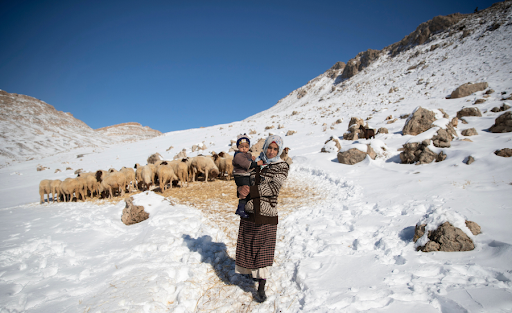Does It Snow in Africa? Exploring the Continent’s Snowy Wonders
When most people hear the word “Africa,” they envision scorching deserts, golden savannas, and lush tropical rainforests. Snow-capped peaks or icy landscapes rarely come to mind. But if you’re wondering, does it snow in Africa, the answer might surprise you. While snow isn’t widespread across the continent, it is indeed a real and regionally significant phenomenon. Africa, known for its rich cultures and incredible biodiversity, also boasts unique high-altitude regions and mountain ranges where snowfall occurs regularly. This article takes you on a journey through Africa’s snow-covered corners, exploring where and why it snows, what conditions make it possible, and how it affects both the environment and local communities.
Geographical Factors Influencing Snowfall in Africa
Snowfall is primarily influenced by temperature and elevation. Areas situated near the equator typically receive more sunlight and heat, making snow a rare occurrence. However, in Africa, certain high-altitude regions defy this norm. Mountains such as Kilimanjaro, the Simien range, and the Drakensberg Mountains provide altitudes high enough for snow to accumulate.
Elevation is the most crucial factor. For example, Mount Kilimanjaro in Tanzania rises over 5,800 meters above sea level. Despite being located near the equator, its summit is perpetually capped with snow and glaciers. Similarly, the Rwenzori Mountains, straddling the border between Uganda and the Democratic Republic of Congo, have snow at elevations above 3,000 meters. These altitudes allow for conditions similar to polar regions, facilitating snowfall and glacial formation.
Snow-Covered Peaks of East Africa
The most iconic image of snow in Africa is Mount Kilimanjaro. Known as the “Roof of Africa,” its snow-capped summit has long inspired explorers, trekkers, and scientists. Although the snow is slowly retreating due to climate change, it remains a powerful symbol of nature’s extremities within the continent. The mountain supports unique flora and fauna adapted to colder climates.
The Rwenzori Mountains, often called the “Mountains of the Moon,” also host significant snow and glacial presence. These peaks reach elevations above 5,000 meters and are perpetually shrouded in mist and snow. Unlike Kilimanjaro, the Rwenzori range features more diverse glacial formations and is home to some of the last equatorial glaciers in the world. This area is also vital for water regulation and biodiversity.
The Highlands of Ethiopia and Their Snowy Tales
In the Horn of Africa lies the Simien Mountains of Ethiopia, which reach heights over 4,500 meters. The region is not only notable for its geological formations and endemic wildlife but also for its occasional snowfall. Though not as prominent as in Kilimanjaro or the Rwenzori, snow in the Simiens can cover vast areas during colder months.
Ras Dashen, Ethiopia’s highest peak, often experiences snow during the winter season. The presence of snow has influenced local cultures and spiritual beliefs, sometimes viewed as blessings or omens. The Simien range is a UNESCO World Heritage Site, attracting eco-tourists and adventure seekers intrigued by its dramatic cliffs and occasional snowfall.
Snow in North Africa: The Atlas Mountains
Northern Africa, particularly Morocco, Algeria, and Tunisia, features the Atlas Mountains. These ranges, especially the High Atlas in Morocco, receive annual snowfall during the winter months. Towns such as Ifrane in Morocco are famous for their Alpine-like conditions. The region even boasts ski resorts like Oukaimeden, which offers skiing opportunities during peak winter.
The Atlas Mountains’ climate is influenced by both the Mediterranean and Atlantic Oceans, contributing to colder winters. Snowfall here plays a crucial role in agriculture, feeding rivers that sustain farming in the valleys below. Seasonal snowmelt is a critical water source in this semi-arid region.
Lesotho and South Africa: Snow in the South
Lesotho, the only country entirely above 1,000 meters in elevation, experiences regular snowfall in its highlands. The Maloti Mountains are snow-covered during the winter, making Lesotho a unique destination for snow lovers in southern Africa. The country hosts the Afriski resort, one of the few ski resorts on the continent.
South Africa also experiences snow, particularly in the Drakensberg Mountains and the Cederberg range. Though rare, even cities like Johannesburg have reported snowfall in recent decades. The presence of snow influences not just tourism but also local water supplies and ecosystem health.
Rare and Surprising Snowfalls
Snow in the Sahara Desert sounds like a paradox, but it has occurred multiple times in recent years. Towns like Aïn Sefra in Algeria, known as the “Gateway to the Sahara,” have seen snow dust their red sand dunes. These events are extremely rare and usually caused by unusual weather patterns, such as Arctic air pushing southward.
In Egypt, snow in Cairo is almost unheard of, but it did occur in 2013. Such anomalies underscore the unpredictability of weather and hint at the broader climatic shifts affecting the globe.
Impact of Snow on Local Ecosystems and Cultures
Snowfall in Africa, though limited, has a profound impact on local ecosystems. It influences water cycles, supports rare alpine flora and fauna, and provides essential freshwater through glacial melt. For local communities, snow often holds cultural and spiritual significance.
In some regions, snow is a tourist attraction, generating income and promoting conservation. Ski resorts in Morocco, Lesotho, and South Africa attract both local and international visitors, boosting the economy and encouraging sustainable tourism practices.
Climate Change and the Future of African Snow
One of the most pressing concerns is the effect of climate change on Africa’s snowy regions. Glaciers on Kilimanjaro, the Rwenzori, and the Simien Mountains are retreating rapidly. Scientists predict that many of these glaciers may disappear within a few decades if current warming trends continue.
This loss would not only affect biodiversity but also disrupt water supplies for millions of people. Glacial melt feeds rivers, supports agriculture, and sustains wildlife. The disappearance of snow could have far-reaching consequences for food security, health, and local economies.
Scientific Research and Monitoring
To understand and mitigate the impacts of climate change, ongoing scientific research is essential. Organizations and universities across the globe are collaborating with local governments to monitor glacial retreat, snowfall patterns, and ecological changes in Africa’s high-altitude regions.
Data collected from satellite imagery, on-the-ground observations, and climate models helps scientists predict future scenarios and develop strategies for adaptation and resilience. Research also aids in raising awareness and informing policy decisions.
Tourism and Education
Snow-covered landscapes in Africa offer unique opportunities for education and eco-tourism. Trekking to Mount Kilimanjaro or exploring the Simien Mountains introduces visitors to the continent’s climatic diversity. These experiences often lead to greater appreciation and advocacy for conservation.
Educational programs aimed at local communities and schools can instill a sense of stewardship. By understanding the importance of snow and its role in their environment, future generations can become active participants in preserving these fragile ecosystems.
Spiritual and Mythological Interpretations of Snow
In many African cultures, snow is more than just a meteorological event. It is often seen as a sign from the divine, a symbol of purity, or an omen of change. In Ethiopia, for example, snow on sacred peaks is interpreted as a message from the gods. Similarly, the Berber people in the Atlas Mountains have folklore surrounding snow and its protective, mystical qualities.
These interpretations add another layer of meaning to snow in Africa, enriching the continent’s cultural tapestry. They also serve as powerful tools for environmental messaging, linking traditional beliefs with modern conservation efforts.
Technological Tools for Snow Management
With snowfall becoming a part of daily life in some African regions, technology is being employed to manage its effects. Snowplows, salt spreaders, and winter tires are increasingly common in places like Lesotho and Morocco during winter months. Weather forecasting and early warning systems help communities prepare for snow-related disruptions.
Additionally, sustainable infrastructure planning now considers snow load on buildings and road safety. These developments highlight the adaptability of African nations in facing new climatic realities.
Comparing Africa’s Snowfall to Other Continents
While Africa is not as snowy as Europe or North America, its snowfall is equally significant due to its rarity and the ecological importance of the affected regions. The snow that does fall in Africa supports endemic species, unique ecosystems, and essential freshwater supplies.
Comparisons help underscore the global nature of climate dynamics. For instance, the rate of glacial retreat in Africa is comparable to that in parts of the Himalayas and Andes, illustrating shared challenges across continents.
Snow in African Literature and Art
Snow has found its way into African literature, poetry, and art. Writers like Ngugi wa Thiong’o and poets from Ethiopia and Morocco have used snow as a metaphor for change, isolation, and beauty. Snow imagery appears in paintings, music, and oral traditions, reflecting its emotional and symbolic resonance.
Artistic expressions involving snow often juxtapose the familiar with the foreign, the ephemeral with the eternal. This blend of realism and symbolism provides deeper insights into how Africans perceive and internalize snow.
Prospects and Possibilities
As global temperatures shift, the future of snow in Africa hangs in the balance. While some regions may see an increase in snowfall due to changes in precipitation patterns, others may lose their snowy identity altogether. The need for adaptation is urgent.
Efforts are underway to protect snow-fed water sources, promote climate-resilient agriculture, and reduce carbon emissions. International collaboration, community involvement, and technological innovation will be crucial in shaping a sustainable future for Africa’s snowy landscapes.
Conclusion
Snow in Africa may seem like a contradiction, but it is a vivid example of the continent’s extraordinary diversity. From the icy peaks of Kilimanjaro to the snow-swept highlands of Lesotho and the Atlas Mountains of Morocco, Africa offers a mosaic of climates and ecosystems. Understanding and preserving these snowy wonders is not just about appreciating rare beauty—it’s about safeguarding water resources, cultural heritage, and biodiversity.
As the world grapples with the challenges of climate change, Africa’s snow-covered regions remind us of nature’s interconnectedness and resilience. They invite us to look beyond stereotypes and embrace the full spectrum of what this magnificent continent has to offer.
FAQs
Q1. Does it snow in Africa?
A. Yes, it does snow in Africa, especially in high-altitude areas like the Atlas Mountains in Morocco, the Drakensberg Mountains in South Africa, and the highlands of Lesotho.
Q2. Which African countries experience snow?
A. Countries like South Africa, Lesotho, Morocco, Algeria, and even Mount Kilimanjaro in Tanzania see snowfall during colder months.
Q3. When does it usually snow in Africa?
A. Snow typically falls during the winter season, which ranges from June to August in southern Africa and from December to February in northern Africa.
Q4. Why do people think it doesn’t snow in Africa?
A. Africa is often associated with warm climates, deserts, and safaris, so many overlook its mountainous regions that experience colder weather and snow.
Q5. Can tourists enjoy snow activities in Africa?
A. Absolutely! Visitors can ski in Lesotho’s Afriski resort or enjoy snowy hikes in the Atlas Mountains, making Africa a unique destination for snow lovers.
Keep an eye for more latest news & updates on Ancient Artz!






